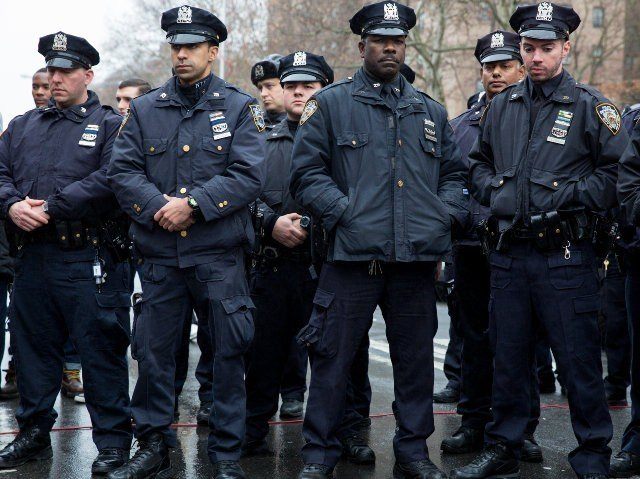Do gun laws make us safer? Watch and decide for yourself.
The political system in Canada uses a placebo effect to create the impression that our regulations reduce gun violence. Specifically, the current Liberal government promised in their election platform to restore the requirement to have a permit to transport restricted and prohibited firearms, reversing changes in the previous government's Bill C-42 (The Common Sense Firearms Licensing Act).
In reality, Bill C-42 did not eliminate the need for a permit whatsoever. All of the same transportation conditions still exist post C-42 with one exception; you can now also take your firearm to and from a gun show. The bill simply made it unnecessary to carry the physical piece of paper with you during transport. The information resides in a database accessible by front line officers should you get pulled over. So simply put, the permit still exists with same conditions as it always has.
No meaningful, practical changes in the transportation of firearms occurred after C-42, yet many people seem eager to convince Canadians otherwise. It’s also clear to see that if someone is licensed to own a firearm, they are trustworthy enough to drive to the shooting range to use it. In addition, it’s unlikely that a lack of paperwork or government permission stops any gang-related shootings, mass murders or other criminal uses. So the question is, what exactly are our politicians doing to stop the real causes of gun violence?

AP/Craig Ruttle
According to a Pew Survey released Jan 11, 2017 that surveyed 8000 police officers from departments larger than 100 officers; 74 percent of American Police officers believe it’s most important to “protect the right of Americans to own guns,”. Interestingly among the general public, only 54% of Americans believe the same thing. This means the law enforcement community have an even greater appreciation for American Second Amendment rights than the citizens themselves.
Read the full study below.
Stats Canada last compared our crime rates to the US in 2000. Download the report below.
[button style='red' url='https://gundebate.ca/wp-content/uploads/2016/09/CRIME-COMPARISONS-BETWEEN-CANADA-AND-THE-US.pdf' target='_blank' icon='iconic-doc']DOWNLOAD THE REPORT[/button]
[button style='red' url='https://gundebate.ca/wp-content/uploads/2016/11/Family-Violence-infographic.pdf' target='_blank' icon='iconic-doc']DOWNLOAD THE INFOGRAPHIC[/button]
Combined Facts and Figures from the RCMP Canadian Firearms Program from the years 2010 to 2014.
A simple analysis shows that the number of Firearm Licences in Canada increased by 153,862 or nearly 9% during the 4 year period. That represents an increase of nearly 3% per 100,000 population. The highest increases were in Alberta and BC that had 22% and 18% increases in licenses respectively. New Brunswick and PEI had a decrease of just over 5000 licences in the same time period. The popularity of shooting is increasing using legal restricted firearm ownership as an indicator. The number of restricted firearms increased by 251,640 or 53% in Canada between 2010 and 2014. Alberta represents the largest increase in ownership with an increase of 68,462 legal restricted firearms or 83% in the same time period. No provinces saw a decrease in the number of restricted firearms since data was available in 2010. Between 2012 and 2014 Canada's legal restricted and prohibited firearms ownership increased by 417 firearms per 100,000 population to a total of 2,724 legal restricted and prohibited firearms per 100,000 people, an increase of 18%.
[button style='red' url='https://gundebate.ca/wp-content/uploads/2016/09/Facts-and-Figures-January-2010-December-2014-Royal-Canadian-Mounted-Police.pdf' target='_blank' icon='iconic-doc']DOWNLOAD THE STUDY[/button]
This 2008 Statistics Canada report looks at violent crime with knives in Canada, with some comparison to Firearms.
Only 18% of violent crimes in Canada involve a weapon; when a weapon is used, knives are the most common. A knife was used against 6% of all victims in 2008, compared to clubs or blunt instruments used against 3% and a firearm used against only 2%. Homicides and attempted murders had the highest proportion involving knives at about one-third. Knife related homicides between 1999 and 2008 were most commonly between acquaintances (49%), usually during the course of an argument. Family members committed another 35% of fatal stabbings. Gang related homicides however, are most commonly committed with a firearm (73%).
[button style='red' url='https://gundebate.ca/wp-content/uploads/2016/09/Knives-and-violent-crime-in-Canada-2008.pdf' target='_blank' icon='iconic-doc']DOWNLOAD THE STUDY[/button]
Statistics Canada examines police reported crimes in 2015. Overall, the Crime Severity Index (CSI) was 1% higher then in 2013 however, it was still 31% lower than a decade earlier in 2005.
There was a an increase in violent firearms offences between 2014 and 2015 from 5 incidents per 100,000 population to 6 incidents per 100,000 population. This increase of 1 represents a 22% increase. 43% of these were "pointing a firearm", 39% involved "discharging a firearm", and 18% were for "using a firearm in the commission of an offence".
Incidents involving a violent firearm violation as well as a more serious Criminal Code violation, such as homicide or robbery, would be reported as these more serious violations and not as firearms offences. Those numbers are therefore not specifically reported in this study.
[button style='red' url='https://gundebate.ca/wp-content/uploads/2016/09/Police-reported-crime-statistics-in-Canada-2015-1.pdf' target='_blank' icon='iconic-doc']DOWNLOAD THE STUDY[/button]
How difficult is it to get a firearm in Canada? How is the public vetted and monitored concerning their ability to buy guns? Find out from someone who actually knows. Rod Giltaca is an instructor with the RCMP Canadian Firearms Program and the President of the Canadian Coalition for Firearm Rights. He is one of Canada’s foremost experts on the politicization of the firearms issue in Canada. (more…)
Firearm classification in Canada is commonly based on a number of criteria.
Can the government make up arbitrary reasons in real time to ban firearms? (more…)